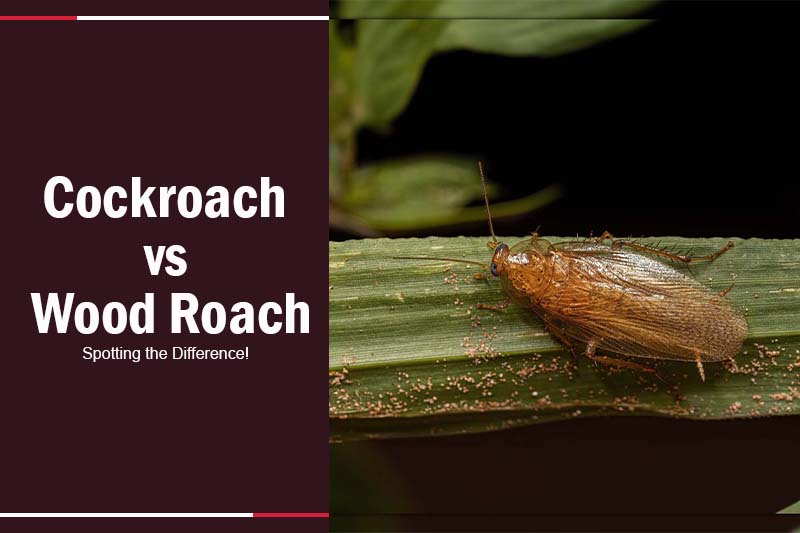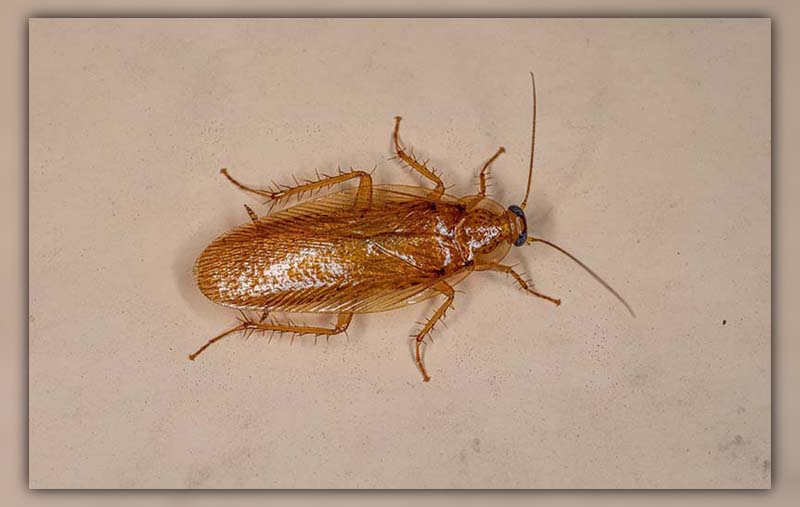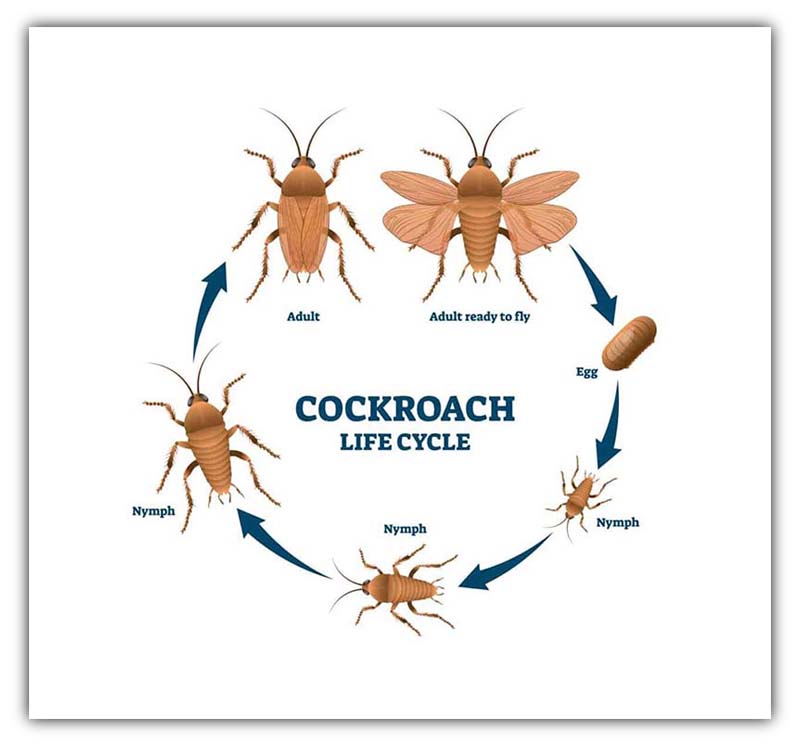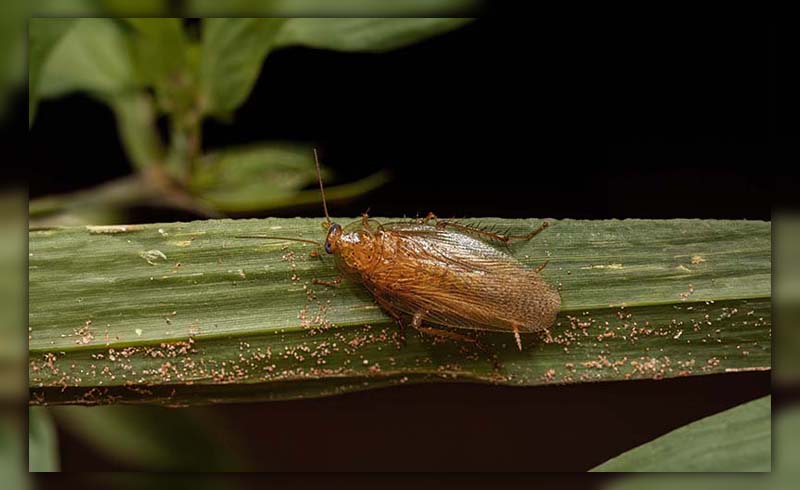Have you puzzled over the nuances between cockroaches and wood roaches, striving to differentiate these seemingly similar creatures?
Fear not, for we unravel the mysteries in this informative blog, delving into the core of the debate: cockroach vs wood roach.

Do wood roaches resemble cockroaches?
Wood roaches (Parcoblatta spp.) differ from household cockroaches.
Wood roaches prefer outdoor habitats and are smaller compared to typical indoor cockroach species.
5 Differences between Cockroach and Wood Roach
- Life Cycle: Wood roaches begin as eggs in protective capsules, hatching into nymphs after approximately 34 days of incubation. They take up to two years to reach adulthood, shedding their exoskeleton as they grow. In contrast, household cockroaches follow a similar but often faster life cycle.
- Size: Adult male wood roaches measure about one inch in length, while females are approximately ¾ of an inch long. Males have functional wings that enable gliding, exceeding their body length. Females possess non-functional, vestigial wings. Nymphs lack wings until reaching adulthood.
- Coloring: Nymphs are uniformly medium brown, lacking wings. In contrast, adult males display a light amber-brown color, while adult females have a dark brown hue with yellow bands on their pronota (head shields). This sexual dimorphism distinguishes the two genders.
- Habitat: Wood roaches primarily inhabit wooded areas rich in moisture, showing a preference for forests and piles of firewood. They thrive in leaf litter, rotting forest vegetation, and dead trees. Unlike household cockroaches, they do not dwell indoors.
- Diet: Wood roaches sustain themselves on a diet of decomposing plant matter, such as rotten vegetation and dead wood. Unlike typical cockroach species, they do not feed on human waste or garbage. Their feeding habits contribute to ecosystem balance by aiding in the decomposition of organic matter.
>> Read more: Green roach: Exploring the Colorful Cuban Cockroach.
Cockroach vs Wood Roach: Life Cycle
Wood roaches undergo a life cycle that commences with egg-laying by female roaches.
These eggs are enclosed in protective capsules called egg cases, each capable of containing up to 32 eggs.
Once deposited in a secure location, such as a dead tree, incubation lasts around 34 days.
Nymphs hatch from the eggs and may take up to two years to mature into adulthood, with molting and exoskeleton shedding as they grow.
Upon reaching adulthood, their life expectancy is a few months.
Wood roach and Cockroach: Size
Adult male wood roaches typically measure one inch in length, while adult females are smaller at approximately ¾ of an inch.
The notable size difference between genders is accentuated by the presence of functional wings in males, allowing for gliding over short distances.
In contrast, females possess non-functional wings. Nymphs, the young ones, lack wings entirely until reaching adulthood.
Cockroach vs Wood Roach: Coloring
Wood roach nymphs exhibit a consistent medium brown coloration and lack wings.
Upon reaching adulthood, males display a light amber-brown hue, while females adopt a dark brown color with distinctive yellow bands on their Pronota (head shields).
This distinct coloring helps differentiate between male and female wood roaches.
Wood roach and Cockroach: Habitat
Wood roaches are predominantly found in wooded areas with high moisture content, showing a preference for forests and stacked firewood.
They thrive in environments with abundant leaf litter, rotting forest vegetation, and dead trees.
Notably, wood roaches do not reside indoors but can inadvertently enter homes through open windows or doors.
>> Read more: Surinam Roach Invasion: Your Guide to a Pest-Free Garden.
Wood roach and Cockroach: Source Food
Wood roaches play a crucial role in the ecosystem by consuming decomposing plant matter, such as rotten vegetation and dead wood.
They refrain from feeding on human waste or garbage, unlike more common cockroach species.
Their diet is vital in maintaining a healthy balance in the natural world by aiding in the decomposition of organic material, preventing excessive accumulation of decaying plant matter.
Similarities between Wood Roach and Cockroach
- Life Cycle: Wood roaches share a similar life cycle with other cockroach species. Females carry eggs, which develop into nymphs before molting and maturing into adult wood roaches, resembling the life cycle of other cockroaches.
- Anatomy: In terms of anatomy, wood roaches exhibit similarities with other cockroach species. Their physiological structure and internal body composition align with the characteristics common to cockroaches.
- Appearance: Wood roaches and other cockroaches can appear similar in body color, especially when viewed from a distance. This similarity in overall appearance can sometimes lead to confusion, making one wonder: cockroach or wood roach?
>> Read more: How to Get Rid of American Cockroach: Expert Home Hacks
Conclusion
In this illuminating journey, we’ve peeled back the layers of the wood roach vs cockroach debate, elucidating the distinctions and parallels between these often-confused critters.
The next time you encounter one of these insects, you’ll be well-equipped to identify its true nature.
Interested in diving deeper into the world of pests? Be sure to explore more informative articles here at Pestweek, where knowledge meets practicality.

Calina Mabel has over 15 years of experience in the field of journalism and communications. Currently, Calina Mabel is the Content Writer for categories such as Cockroach, Ants, Bed Bugs, Mosquito, Rodent, Termite, and Flies on Pestweek.com. She aims to build content for these categories with a focus on providing valuable and accessible information to readers, in order to create the world’s largest knowledge community about Pests.
All content written by Calina Mabel has been reviewed by Emily Carter.




